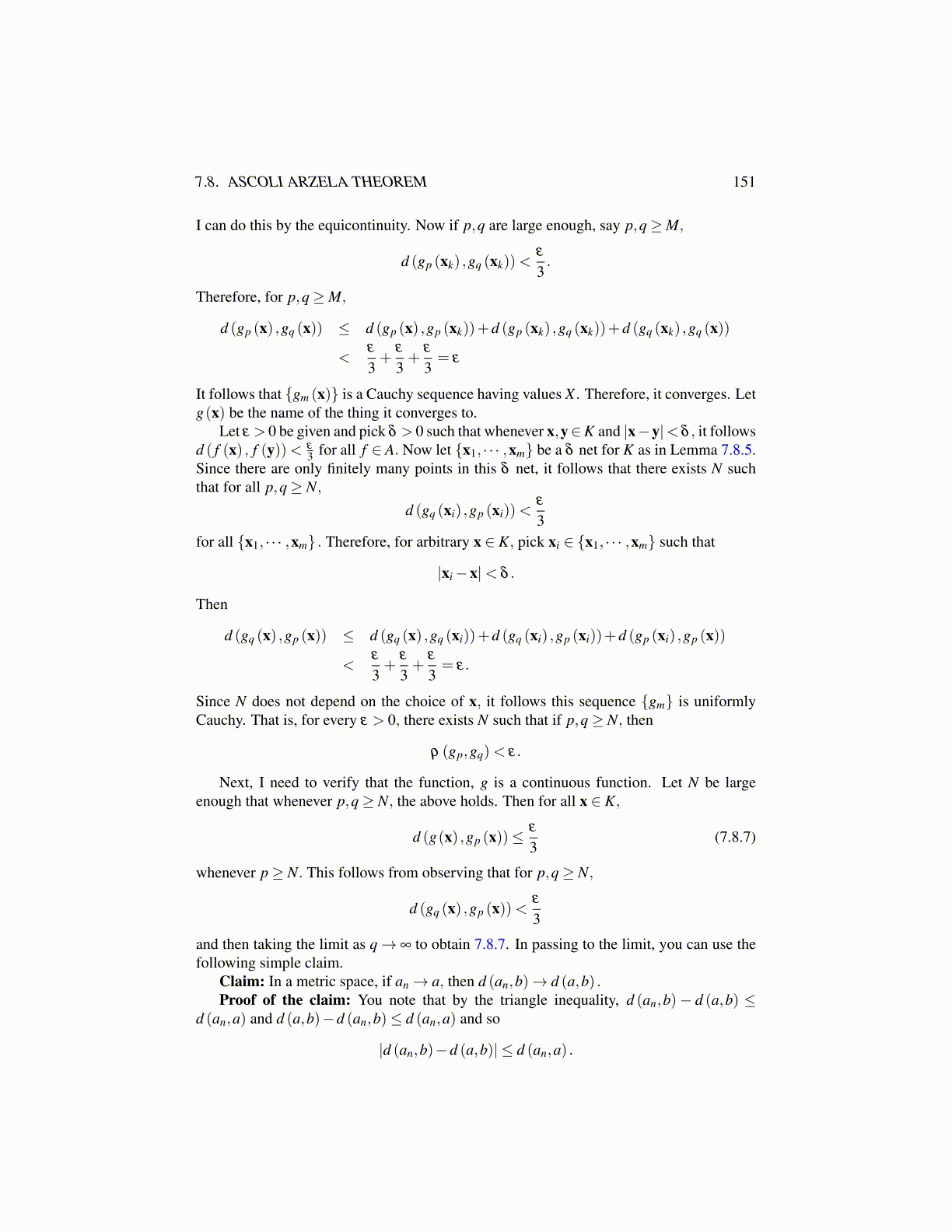
7.8. ASCOLI ARZELA THEOREM 151
I can do this by the equicontinuity. Now if p,q are large enough, say p,q≥M,
d (gp (xk) ,gq (xk))<ε
3.
Therefore, for p,q≥M,
d (gp (x) ,gq (x)) ≤ d (gp (x) ,gp (xk))+d (gp (xk) ,gq (xk))+d (gq (xk) ,gq (x))
<ε
3+
ε
3+
ε
3= ε
It follows that {gm (x)} is a Cauchy sequence having values X . Therefore, it converges. Letg(x) be the name of the thing it converges to.
Let ε > 0 be given and pick δ > 0 such that whenever x,y∈K and |x−y|< δ , it followsd ( f (x) , f (y))< ε
3 for all f ∈ A. Now let {x1, · · · ,xm} be a δ net for K as in Lemma 7.8.5.Since there are only finitely many points in this δ net, it follows that there exists N suchthat for all p,q≥ N,
d (gq (xi) ,gp (xi))<ε
3for all {x1, · · · ,xm} . Therefore, for arbitrary x ∈ K, pick xi ∈ {x1, · · · ,xm} such that
|xi−x|< δ .
Then
d (gq (x) ,gp (x)) ≤ d (gq (x) ,gq (xi))+d (gq (xi) ,gp (xi))+d (gp (xi) ,gp (x))
<ε
3+
ε
3+
ε
3= ε.
Since N does not depend on the choice of x, it follows this sequence {gm} is uniformlyCauchy. That is, for every ε > 0, there exists N such that if p,q≥ N, then
ρ (gp,gq)< ε.
Next, I need to verify that the function, g is a continuous function. Let N be largeenough that whenever p,q≥ N, the above holds. Then for all x ∈ K,
d (g(x) ,gp (x))≤ε
3(7.8.7)
whenever p≥ N. This follows from observing that for p,q≥ N,
d (gq (x) ,gp (x))<ε
3
and then taking the limit as q→ ∞ to obtain 7.8.7. In passing to the limit, you can use thefollowing simple claim.
Claim: In a metric space, if an→ a, then d (an,b)→ d (a,b) .Proof of the claim: You note that by the triangle inequality, d (an,b)− d (a,b) ≤
d (an,a) and d (a,b)−d (an,b)≤ d (an,a) and so
|d (an,b)−d (a,b)| ≤ d (an,a) .